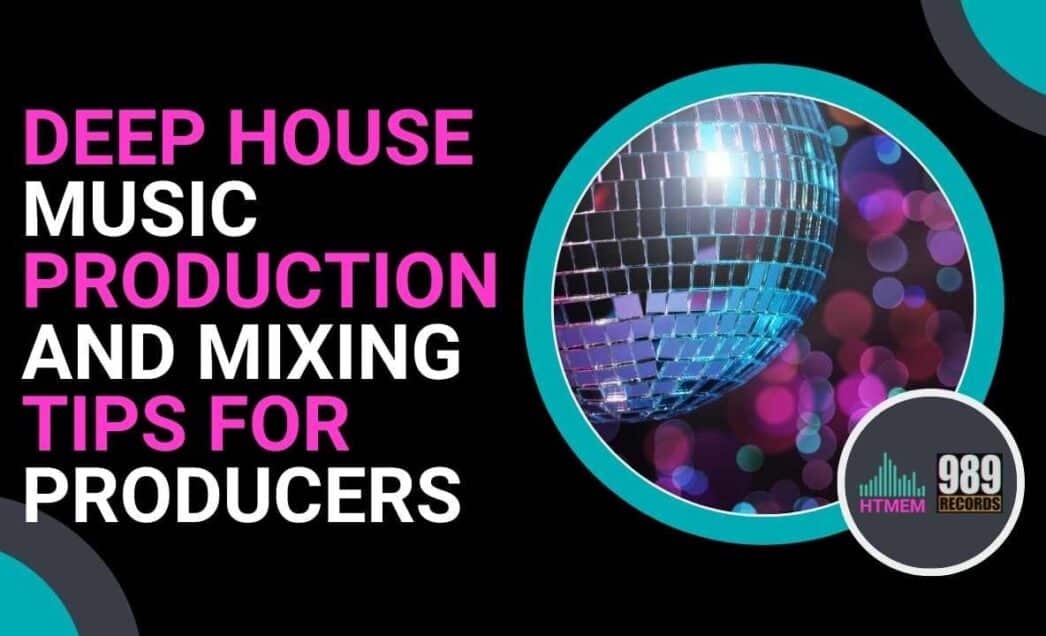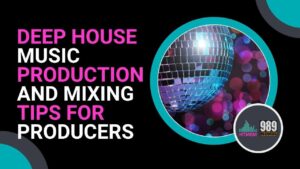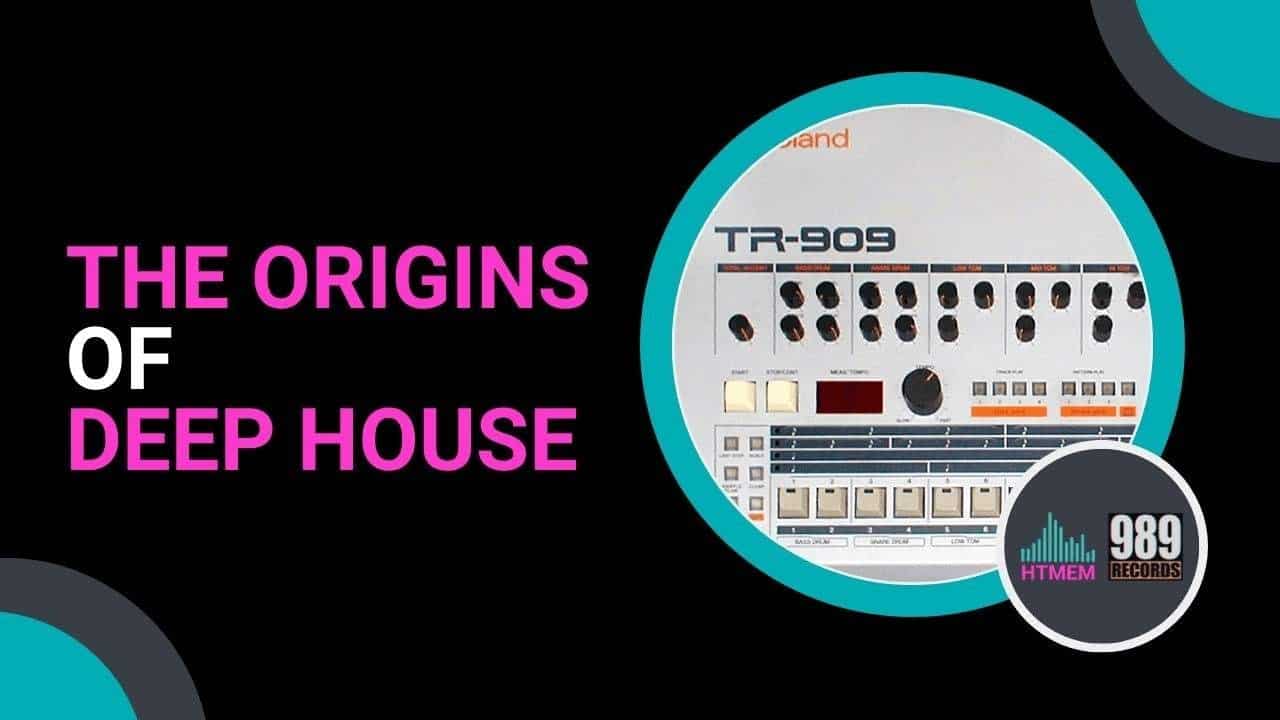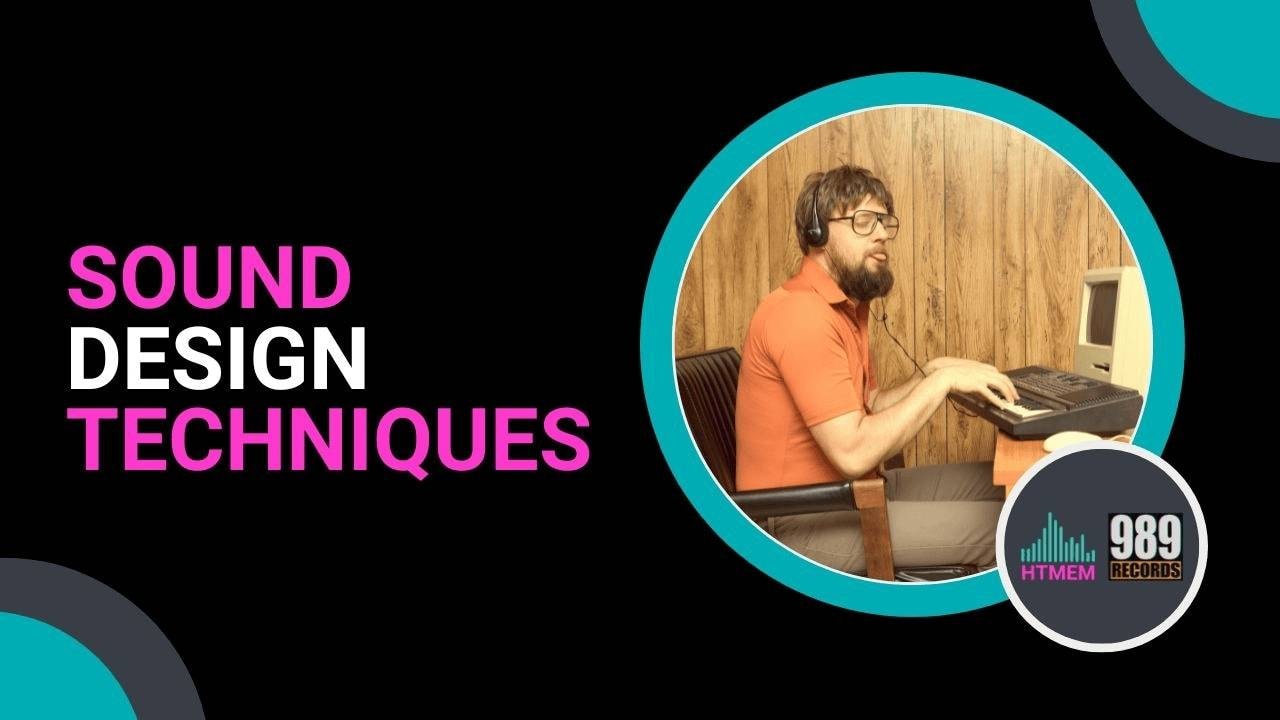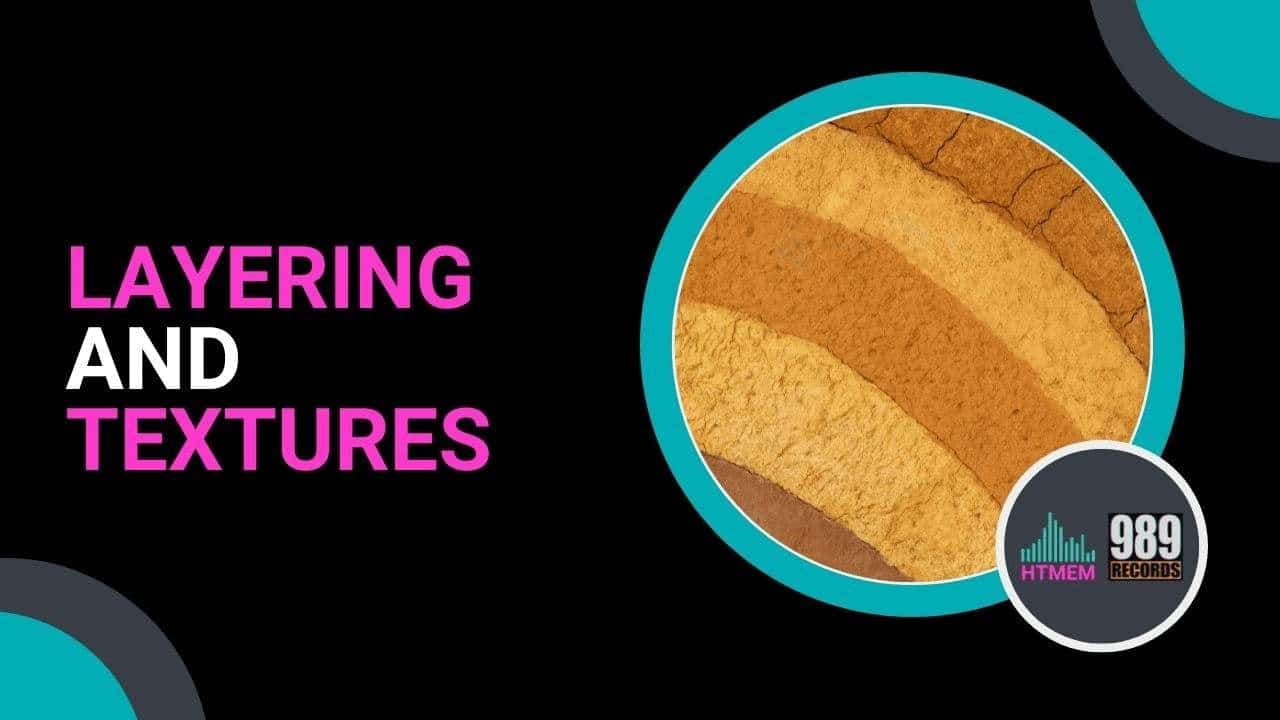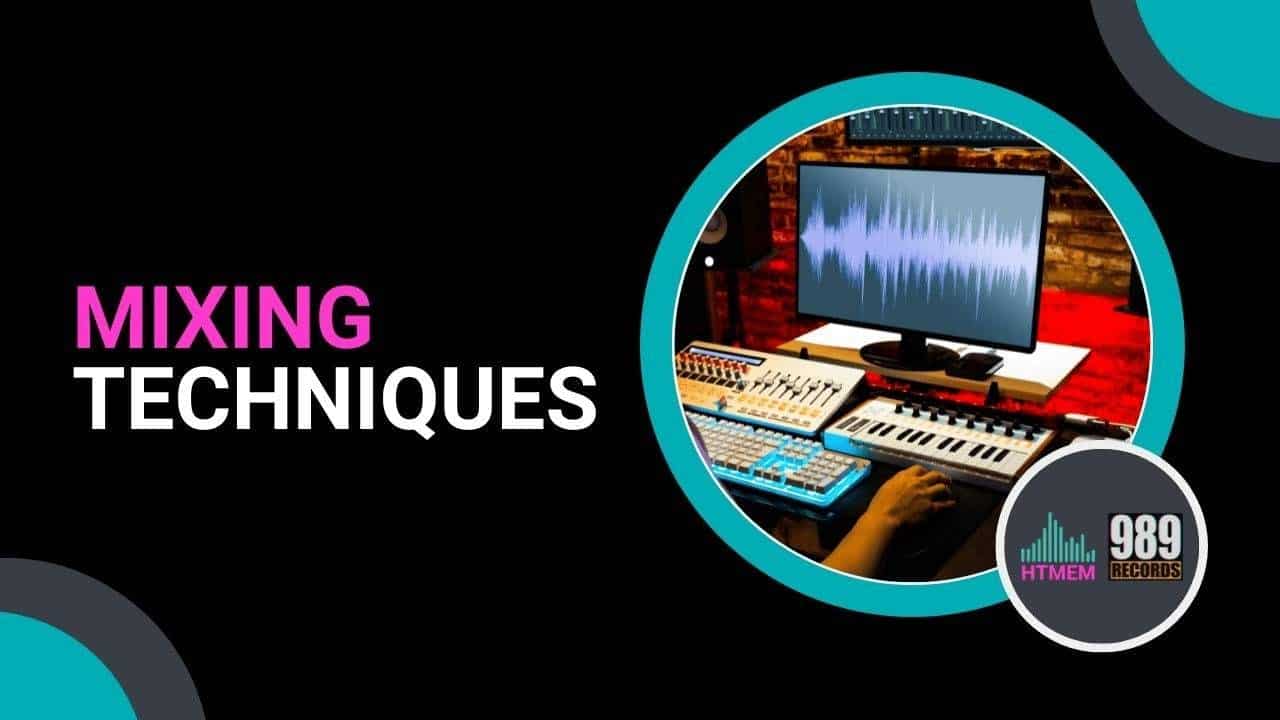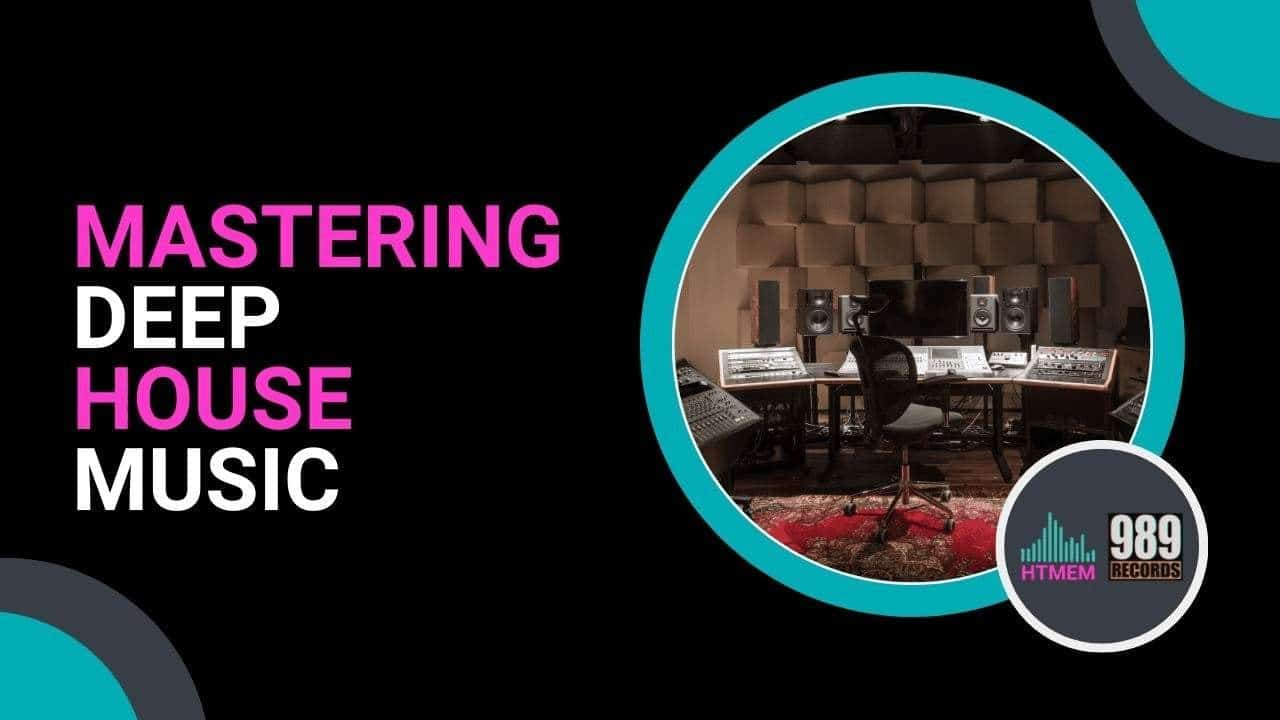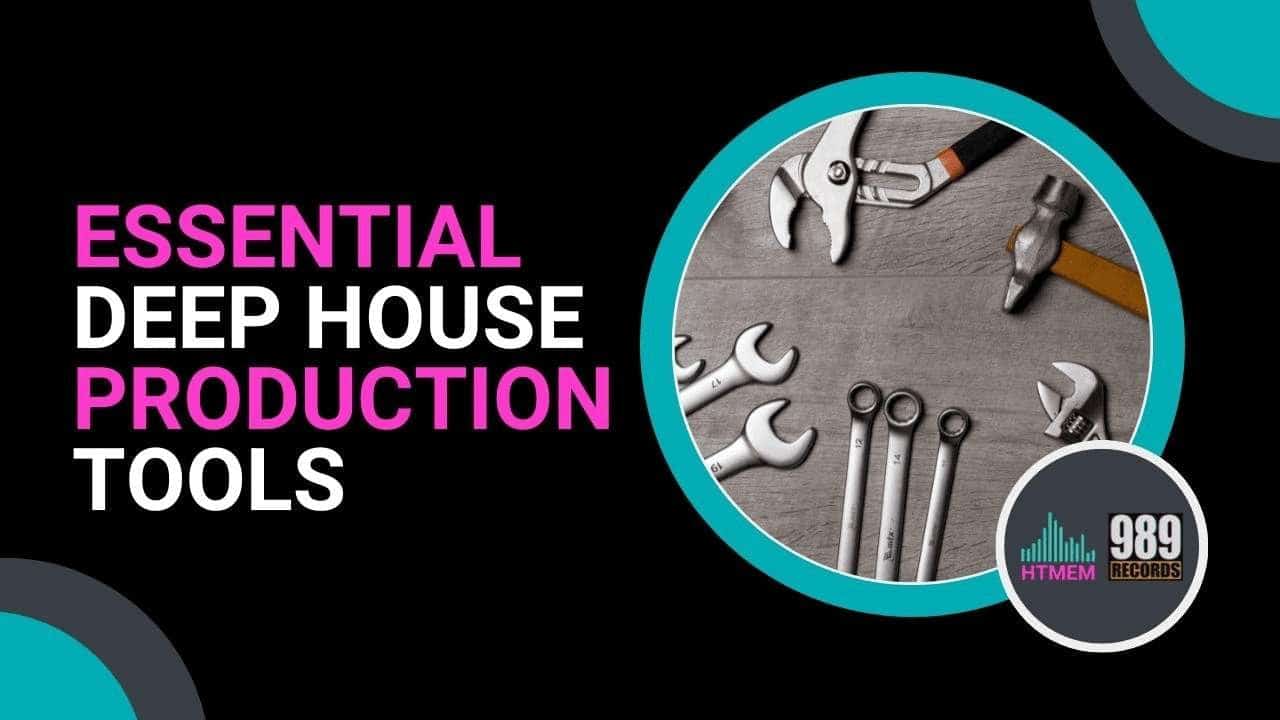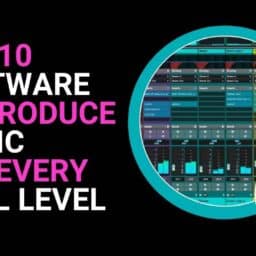Are you ready to dive deep into the world of Deep House Music Production?
From its origins to essential elements, sound design, and mixing techniques, we’ve got you covered. Immerse yourself in the captivating world of Deep House and unlock the secrets behind its signature sound. Let’s get started!
Key Takeaways
- Unlock the potential of deep house music production with inspiring tools and techniques.
- Create captivating soundscapes with warm pads, smooth basslines, soulful melodies, groovy drums, and expert sound design.
- Master your track for optimal loudness, dynamic range & tonal balance to make it stand out!
1 Understanding House Music Production
What is House Music?
House music is a genre of electronic dance music (EDM) that originated in the early 1980s in Chicago and New York City. It is characterized by its upbeat tempo, typically between 118 and 130 beats per minute (BPM), and features prominent use of synthesizers, drum machines, and sampled breaks. House music has several subgenres, including deep house, acid house, and tech house. The genre’s infectious rhythms and repetitive beats make it a staple in clubs and dance floors worldwide. Whether you’re grooving to the soulful vibes of deep house or the hypnotic loops of tech house, the essence of house music lies in its ability to make people move.
House Music History and Evolution
House music has its roots in the disco and funk music of the 1970s. The genre emerged in the early 1980s, particularly in Chicago and New York City, where DJs and producers began experimenting with new sounds and techniques. The first house music tracks were created by pioneers like Frankie Knuckles and Larry Levan, who drew inspiration from disco, funk, and soul music. Over time, house music has evolved and branched out into various subgenres, including deep house, acid house, and tech house. Each subgenre brings its unique flavor to the dance floor, from the soulful melodies of deep house to the raw, edgy sounds of acid house. The evolution of house music continues to inspire electronic music producers around the globe, pushing the boundaries of what this genre can achieve.
2 The Origins of Deep House
Deep house is a subgenre of house music that originated in the 1980s. It is characterized by its soulful and jazzy sound, often featuring complex harmonies and melodies. Deep house music typically features a slower tempo than other house music subgenres, often between 110 and 120 BPM. The genre has been influenced by soul, funk, and jazz music, and is often associated with the underground club scene. Early pioneers like Larry Heard, also known as Mr. Fingers, played a crucial role in shaping the deep house sound with tracks that combined lush chords, smooth basslines, and intricate rhythms. The deep, emotive quality of deep house music makes it a favorite among those who appreciate the more introspective side of electronic dance music.
1 The Origins of Deep House
The fascinating origin of house music traces back to the late 1980s and early 1990s, with Deep House emerging as a soulful, atmospheric, and groove-driven subgenre of electronic music. House music originated in Chicago during the early 1980s, as the Warehouse nightclub in Chicago birthed house music. Electronic dance music enthusiasts embraced the 4/4 kick-clap rhythm as a foundation for the genre, leading many to create their own house music. House music typically utilizes a 4/4 beat structure with a heavy kick drum and a clap on the two and four beats.
This essential beat structure, along with early house music pioneers’ innovative use of drum machines like the TR-808 and TR-909, remains relevant in producing house music today. Most house tracks feature a kick pedal, clap sound, and hi-hats as their main rhythm components. The kick drum is the heart of house music and carries the rhythm of the track. House music often features a steady 4/4 beat structure, which provides a consistent and danceable rhythm, deeply rooted in the underground club scene.
Early Pioneers
Three trailblazing innovators of Deep House, Frankie Knuckles, Larry Heard, and Kerri Chandler, played a significant role in shaping the genre’s distinct sound with their soulful melodies.
- Frankie Knuckles combined soul, jazz, and disco elements.
- Larry Heard’s influence brought a soulful, futuristic touch.
- Kerri Chandler crafted a melodic and rhythmic sound that continues to inspire electronic music producers.
Gleaning insights from these innovators paves the way for you to develop your unique house music style.
Take pleasure in this specially curated playlist, featuring classic deep house tracks from the genre’s inception to the most captivating contemporary tunes.
Deep House Story YouTube Playlist
Deep house music stands out with its unique sound, characterized by:
- Slower tempo (110-125 BPM)
- Smooth basslines
- Lush pads
- Melodic hooks
These elements, along with inspiration from soul, funk, and jazz chords, can be crafted using a digital audio workstation (DAW) with built-in virtual instruments and effects. Deep house has a laid-back groove and focuses on the flow of the track, often featuring sampled vocals and groovy bass lines.
A solid grasp of musical theory, sound design, and mixing techniques is indispensable in the production of this type of electronic genre.
3 Essential Elements of Deep House Music
Deep house music typically features several essential elements, including a prominent kick drum, a driving bassline, and soulful melodies. The genre often incorporates elements of soul, funk, and jazz music, and is characterized by its use of complex harmonies and melodies. Deep house music often features a slower tempo than other house music subgenres, and is often associated with the underground club scene. To produce deep house music, producers typically use a combination of software and hardware tools, including digital audio workstations (DAWs), synthesizers, and drum machines. The kick drum provides the steady pulse that drives the track, while the bassline adds groove and depth. Melodic elements, often played on synthesizers or sampled from classic records, bring a touch of soul and emotion to the mix. By blending these elements, producers can create house tracks that are both danceable and deeply moving, capturing the essence of what makes deep house so special.
2 Essential Elements of Deep House Music
Focusing on key elements like drums and percussion, basslines and groove, and chords and melodies is paramount in producing this genre. Drums and bass are considered the most crucial elements in house music production. Kick drum sound and bass need to have unique frequency spaces to avoid mixing mud. Leaving space for the kick and bass is vital for a clean bass-heavy mix, ensuring clarity and impact in the low end.
Drums lay the rhythmic foundation while percussion loops and one-shots craft the groove.
Automating pitch and layering samples in basslines create an organic and groovy effect. Chords, complex harmonies, melodies, and vocals form the key ingredients for an impactful musical result.
Drums and Percussion
Classic drum machines like the 707, 808, and 909 shaped the iconic hardware of house music, with their electronic and programmed 1-bar patterns offering a uniquely dynamic sound. Incorporating percussion loops into these patterns can add rhythmic complexity and depth to your tracks.
The drums’ limited sound palette gave the genre its distinct flavor, and their legacy is preserved in modern production with samples resembling or made from the originals.
Like for Disco Music in the 70s, a pre-shifted clap playing around 20ms before the beat of the kick drum adds a more organic flavor to the groove. Layering loops with other patterns creates unique grooves that make a track stand out.
Additionally, live drums can spice up your production, or you can use both drum machines and live drums, with MPCs or Elektron being great tools for sampling drums.
Basslines and Groove
Basslines provide counter rhythms and ostinatos, defining the key and chord progression. They are both rhythmic and tonal, creating counter rhythms in house music tracks.
The kick drum offers a foundation in the sub-range, while basslines fill out the main bass range, creating a wonderful balance.
Sidechain compression can be used to create space for the kick by ducking the bass out of the way when it hits. This technique is commonly used in house music to create a pumping effect, making room for the kick drum. The kick drum is often prioritized over the bass in the low end of house mixes, ensuring a clear and powerful rhythm.
To achieve a smooth and melodic bassline, use subtractive synthesis, filtering, and saturation.
Subtle automation of parameters in synthesizers creates engaging soundscapes with variations.
This results in a captivating, deep tune with an organic and groovy sound.
Chords and Melodies
Chords, melodies, and vocals create a lush and atmospheric soundscape, often featuring jazzy or soulful progressions and hooks.
Starting with the five basic elements (drums, bassline, chords, melody, and vocals), and experimenting with the minor pentatonic scale can add a unique touch to your tune, setting it apart from the progressive house genre.
Using sample-based chord progressions, playing one note at a time with the chord already embedded in the sample allows for easy chord progression creation.
3 Sound Design Techniques
Creating warm and rich pads, crafting smooth bass sounds, and designing atmospheric effects are imperative in producing this type of electronic music. Modern house music often utilizes effects like reverb and delay to manage spatial placement in the mix, enhancing the immersive quality of the sound.
Dive into the world of deep house production and explore:
- Analog-Style Synthesizers
- Layering and Processing Techniques like Reverb and Chorus
- Subtractive Synthesis
- Filtering
- Saturation
- Creative Sampling and Sound Manipulation
By mastering these techniques, you can take your production skills to the next level 🔥.
Creating Warm and Rich Pads
Analog-style synthesizers, known for their warm and rich sounds, can be used to create immersive pads. Some techniques to achieve this include:
- Layering Multiple Synthesizers
- Applying Processing Techniques such as Reverb and Chorus
- Adding Depth, Space, and Movement to the Pads
- Crafting a Captivating Soundscape
Crafting Smooth Bass Sounds
Utilizing subtractive synthesis, filtering, and saturation can help you achieve smooth bass sounds in deep, as well as in bass house. Manipulating parameters such as oscillator waveforms, filter types, and envelope settings in synthesizers allows you to create truly original bass sounds, making your track stand out from the rest.
Designing Atmospheric Effects
To create atmospheric effects, try using reverb, delay, and modulation effects, as well as experimenting with creative sampling and sound manipulation.
These tools help to craft an atmospheric soundscape that enhances the overall listening experience, adding depth and space to your deep track.
4 Arrangement and Structure
Arrangement and structure are fundamental in this type of production, contributing significantly to building tension and release as well as incorporating layering and textures. A subtractive arrangement helps in structuring the track by building it up first before removing elements to create dynamics.
Creating a captivating, deep tune involves using breakdowns, build-ups, and dynamic changes in the arrangement, as well as combining synths, samples, and effects to create a rich and immersive listening experience. A typical song flow for house music can be intro – verse 1 – build 1 – drop 1 – break – verse 2 – build 2 – drop 2 – outro. Let’s understand something more.
Building Tension and Release
Achieving tension and release in deep house music can be done through the use of various techniques, including:
- Breakdowns
- Build-ups
- Dynamic Changes in the Arrangement
- Harmonic Tension
- White Noise Risers
- Reverb and Echo Effects
These techniques can help create an electrifying anticipation before a beat drop, engaging listeners and taking them on a sonic journey. These techniques can be used to create a sense of anticipation and excitement, as well as to introduce new elements to the track and keep it interesting.
Layering and Textures
Layering and textures are integral in shaping a great deep house music experience. Combining multiple sounds, samples, and effects creates a unique soundscape that is truly engaging and makes people dance and shout on the dance floor.
Techniques that can add depth and space to your creation include:
- Sound Design
- Sidechain Compression
- Layering Drums and Other Elements
- Incorporating Recorded Textures or White Noise
- Experimenting with Effects
5 Mixing Techniques for Deep House
Mastering techniques such as balancing the low end, creating depth and space, and enhancing groove and dynamics are vital in achieving a pristine, loud, and harmonious deep house mix.
Utilizing compression, transient shaping, automation, EQ, and sidechain compression can emphasize rhythmic elements, maintain a consistent energy level, and create a polished final track. The individual track volume is crucial in achieving a balanced mix.
Balancing the Low-End
Balancing the low end in deep house music involves careful EQ and sidechain compression to ensure a clean and powerful mix.
Adjusting the frequency balance with EQ and using sidechain compression to create space for the kick drum to punch through can help you achieve a captivating deep house track with a well-balanced low end.
Creating Depth and Space
Creating depth and space in a deep house mix can be achieved through the use of reverb, delay, and stereo imaging techniques.
These tools can help you craft a captivating sense of depth and space in your mix, ensuring your deep house track sounds immersive and engaging on any playback system.
Enhancing Groove and Dynamics
Enhancing groove and dynamics in deep house music involves the use of several techniques:
- Compression: This can be used to control the dynamic range of different elements in the mix, such as drums and bass, to create a more consistent energy level.
- Transient shaping: By using transient shapers, you can emphasize or soften the attack of drum transients, adding more punch or subtlety to the rhythm.
- Automation: Automating parameters in synthesizers, such as filter cutoff or resonance, can add movement and variation to the track, keeping it interesting and engaging.
It’s essential to high-pass most elements in the mix to ensure clarity, preventing low-frequency buildup and maintaining a clean sound.
By utilizing these techniques, you can create a more dynamic and captivating deep house track. Explore our extensive course catalog for a profound exploration of the aforementioned subjects.
6 Mastering Deep House Music
The focus of mastering deep house music is on achieving optimal loudness and dynamic range, along with ensuring correct EQ and tonal balance.
Techniques such as using a limiter, adjusting the tonal balance with an EQ, and adding punch and clarity with a compressor are essential for a polished and professional deep house track.
Loudness and Dynamic Range
Carefully balancing loudness and dynamic range in deep house music mastering is crucial to maintaining the genre’s characteristic warmth and depth.
By using compression and limiting to control the overall volume of the track and utilizing EQ and other tools to shape the dynamic range, you can achieve a captivating deep house track that sounds great on any system.
Let’s not delve into the loudness war and average mastering level. Instead, let’s acknowledge that each streaming platform has its own standards for finalizing volume. If you wish to gain a comprehensive understanding of levels and references, we invite you to explore our mixing course. It will provide you with invaluable insights.
EQ and Tonal Balance
EQ and tonal balance play a significant role in deep house music mastering. By making subtle adjustments with EQ, you can ensure a consistent and polished sound across all playback systems.
Achieving tonal balance involves using EQ to adjust the frequency balance of the mix and using compression and limiting to control the dynamics. Getting a solid static mix before applying effects is crucial in house music production, as it lays the foundation for a polished and professional track.
7 Essential Deep House Production Tools
Possessing the right tools is fundamental for an electronic music producer to create amazing deep house tracks, as well as in tech house music production.
Digital Audio Workstations (DAWs) like our beloved Cubase, Ableton Live, Logic Pro, and Pro Tools, along with a variety of virtual instruments for synthesis and plugins for effects and mixing, can greatly enhance your deep house music production. FL Studio, Ableton Live, and Logic Pro X are popular DAWs used for house music production.
Additionally, sample packs and sound libraries offer a wealth of inspiration and resources, including drum samples, synth presets, and loops.
DAWs and Plugins
Popular DAWs for deep house music production include our favorite Steinberg Cubase PRO.
This powerful software program allows you to record, edit, and mix audio, while plugins extend their capabilities and help you create amazing sounds.
Native Instruments, FabFilter, and iZotope offer some of the most powerful plugins available for synthesis, effects, and mixing.
Sample Packs and Sound Libraries
Sample packs and sound libraries provide a vast array of audio samples, loops, and presets to spark creativity in your deep house music production. Layering sounds together can help fill the frequency spectrum and create fuller mixes, adding depth and richness to your tracks.
Websites like Loopmasters and LANDR offer inspiring sample packs and sound libraries, such as Classic House Anthems (Part 2), Slap House, DIVA (Vocals), Roger Sanchez – S Man Weapons, House Creations, and Vocal House Anthems.
Make sure to grab our exclusive HTMEM | 989 Records collection of Royalty Free Sample Packs! Download them and add a touch of excellence to your projects. High-quality samples improve the overall quality and professionalism of house music tracks, ensuring your productions stand out.
8 Case Studies: Iconic Deep House Tracks
Iconic deep house tracks serve as valuable study material, offering insights into the genre’s production techniques and creative approaches. By analyzing these tracks’ production techniques, sound design, and arrangement, you can learn from the masters and apply their methods to your own deep house music production. I have selected something that I hope will resonate with your preferences.
Track 1: Steve Bug & Cle – Let It Go [Nu Groove Records]
A wealth of knowledge can be gained by analyzing the production techniques, sound design, and arrangement of classic deep house tracks, including the use of compression and de-essing of vocals, to enhance your own deep house production.
In this specific case, there’s no need for sidechaining because the bass and kick do not overlap in terms of timing and frequency range. This smart tactic manages the dynamics in the low-end region, eliminating the need for sidechain compression that’s typically used when the bass and kick are played simultaneously.
Track 2 – Clover Ray, Sam Dexter, Mallin – Thick Of It [Hungarian Hot Wax]
In my opinion, you can gain additional knowledge by studying the creative process and mixing choices behind another exceptional and contemporary deep house track. This provides a more in-depth understanding of the production techniques of the genre and its progression over time.
Listen and pay attention to the use of:
- Harmonic Tension
- Filtered Pads
- Reverb
- Echo Effects
- Layering and Textures
- Vocals
Exploring different techniques to create house music in the track can inspire your own deep house music production and help you craft a truly engaging and immersive listening experience.
May I Leave Here Something Mine?
Just to complete this journey into Deep House Music, if you like, below you can find a couple of deep house tracks I composed and published. Feel free to like the playlist and save it for the future.
Summary
As we’ve explored, deep house music production involves a combination of essential elements, sound design techniques, arrangement and structure, mixing and mastering, and the right tools. By learning from the pioneers and analyzing iconic tracks, you can craft a captivating deep house track that engages listeners and transports them to a sonic world of warmth, depth, and groove. Now it’s time to dive in and unleash your creativity in the world of deep house music production! There are numerous subgenres of house music, including acid house, progressive house, deep house, and slap house. Progressive house is known for its longer sections and gradual build-up of elements, offering a distinct listening experience.
10 Frequently Asked Questions
What is Deep House music?
Deep House music is a subgenre of house music originating in the 1980s that fuses elements of Chicago house, jazz-funk, and soul music. Tracks usually range between 7 and 10 minutes in length and are characterized by their mellow tempo and less percussion than mainstream house music. Its origins are attributed to early recordings of Larry Heard (aka Mr. Fingers) and other iconic Chicago house DJs. House music draws influences from disco, funk, soul, and synth-pop.
What is House Music vs. Deep House?
House music is typically faster-paced, ranging between 125 and 128 beats per minute, while deep house has a slower tempo, usually between 120 and 124 beats per minute. House music usually has a BPM ranging from 120 to 130. Additionally, Deep House is more bass-oriented than House Music, which typically focuses on percussion. Bass house, on the other hand, features heavier lead and bass sounds influenced by dubstep and has a BPM range of around 120-124 with a 4/4 beat structure.
Why do People like Deep House Music?
Deep house music energizes us with its deep bass and synths while also allowing us to focus, thanks to its repetition and unobtrusive soundscape. People love the combination of focus and energy that deep house music brings them.
What do you Need to Make House Music?
To produce house music, a DAW like Steinberg Cubase, Logic, Ableton, or FL Studio and drum, synth, and vocal samples are required to create looped beats and chords that can be arranged in the timeline or clip view. Producers often utilize samples, drum machines, and hardware synths to create loops, adding a unique character to their tracks. Most DAWs offer tools for adjusting swing or groove to create interesting drum patterns in house music.
Naturally, you also need to grasp the art of mixing your music, as we elaborate in our dedicated mixing course.
What are the essential elements of Deep House Music production?
Deep house production requires drums and percussion, basslines and grooves, and chords and melodies for a complete and captivating sound.

